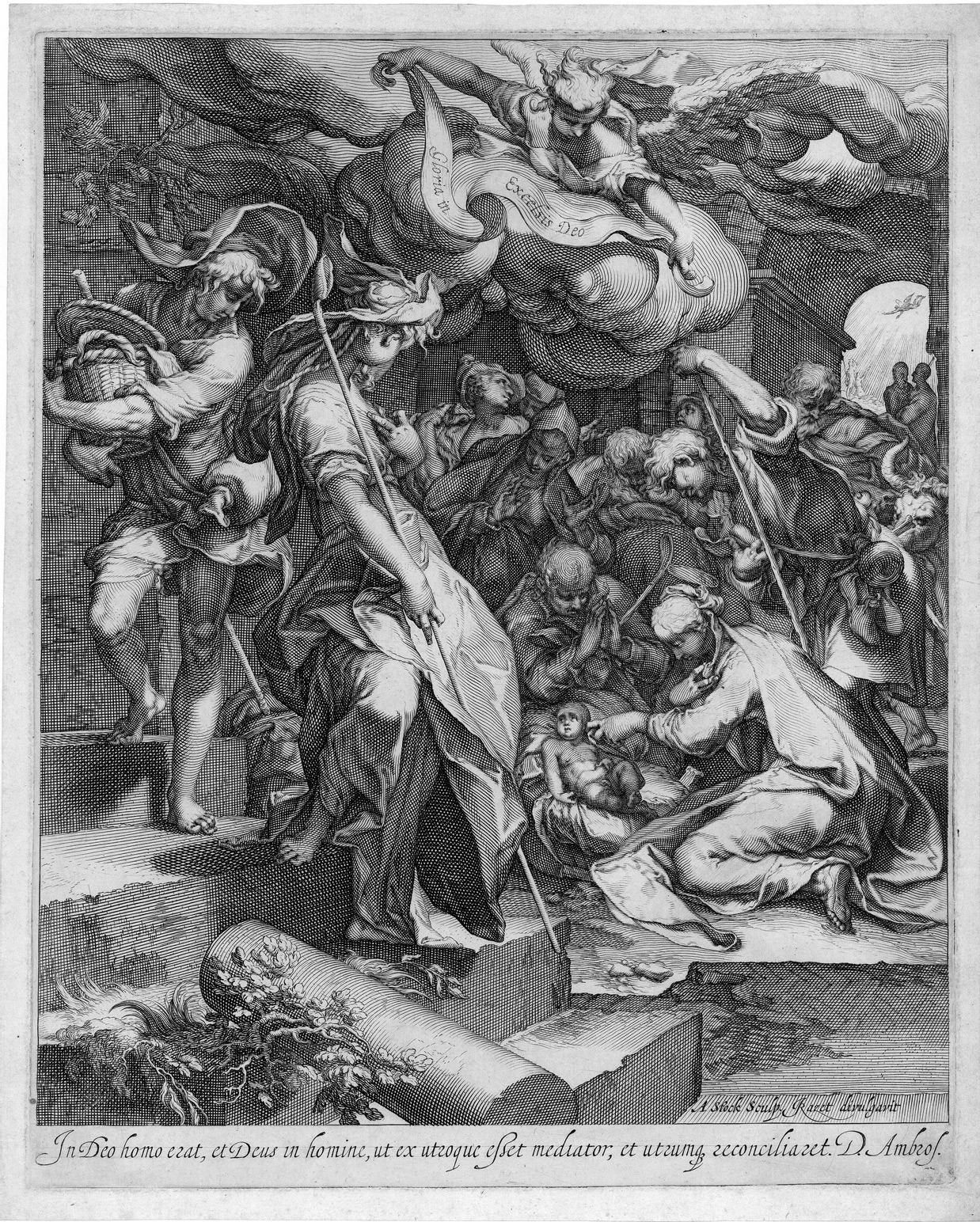Loading the page ...
Andries Jacobsz. Stock
(ca. 1580 Antwerp – ca. 1648 The Hague)
The Adoration of the Shepherds. Engraving after A. Bloemaert. 35.5 x 28.3 cm. Ca. 1600–05. Wurzbach 2, Hollstein 3 I (of III). Watermark: Basle Crozier.
The Antwerp-born engraver Andries Stock was very likely a pupil of Jacob de Gheyn II in The Hague, who was also a witness at his wedding. In 1614, Stock became a member of the guild there. The list of his engravings in Hollstein comprises 36 items, including religious images, portraits and book illustrations. Stock was a genuine reproductive engraver, who worked exclusively after other artists’ designs and skilfully adapted to the style of his model. This explains the great stylistic diversity of his printed oeuvre. The masters whose inventions he reproduced in prints included Paul Bril, Pieter Paul Rubens, Jan Wildens, Daniel Vinckboons, and Jacob de Gheyn.
The present engraving shows a lost work by Abraham Bloemaert. It was published by the Amsterdam calligrapher and publisher Jacques Razet and in terms of quality it is one of the most important, if not the main work by Andries Stock. It is also the earliest known engraving by the artist, for dating of which the death of the publisher Razet in 1609 provides the terminus ante quem. Roethlisberger dates the engraving ca. 1600–05, which seems very plausible in view of its great stylistic aμnity to Jan Saenredam’s engraving of The Adoration of the Shepherds (Hollstein 24) from the year 1599 (also published by Razet). The print depicts a composition from Bloemaert’s early period, which displays the stylistic features characteristic of his mannerist style of the 1590s (see Marcel C. Roethlisberger, Marten Jan Bok, Abraham Bloemaert and his Sons, Doornspijk 1993, pp. 94–95). The interacting figures, placed in close proximity to each other, energetically per form a great variety of different movements. The Madonna with the child appears relatively small compared to the figure of the shepherd carrying a basket on the left and the elegant silhouette of the shepherdess in the foreground, who dominates the composition. The elaborate twist of her body introduces a striking vertical element, which connects the heavenly sphere of the angel with the architectural ruins in the lower foreground of the composition. As an engraver Stock reveals himself to be an apt and practised student of the so-called Goltzius style. By means of a differentiated system of swelling and concentric lines and a wide variety of hatching patterns he creates a maximum of three-dimensionality and chiaroscuro effects which faithfully reflect the mannerist dynamism of the model.
A very fine, sharp and contrasting impression with even margins around the platemark. Minor aging, otherwise in excellent and unrestored condition and of museum quality.
